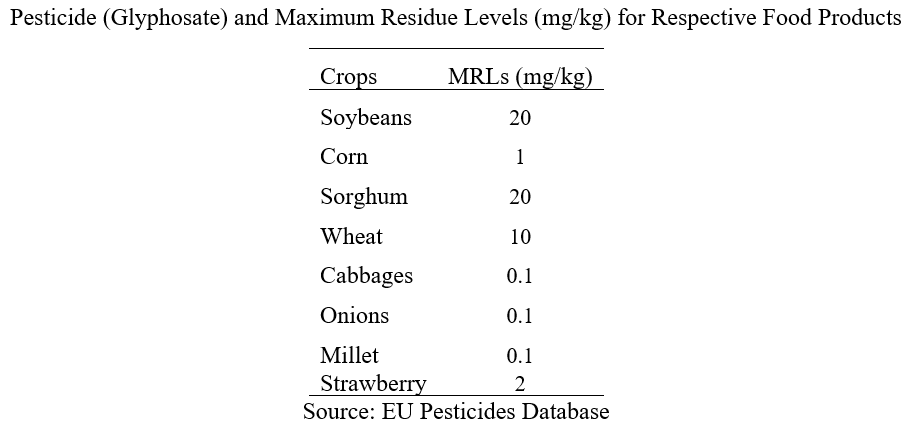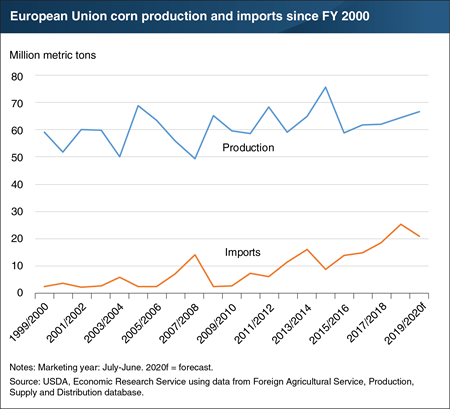posted on Thursday, May 14, 2020
Recently, a question that drew the attention of many farmers across the U.S. was regarding Maximum Residual Limits (MRLs) and its abidance of Good Agricultural Practices (GAP). An MRL is the maximum amount of pesticide left as a residue in commodity or food items. The use of MRLs for commodities or food safety limits act as one condition for the trade and supply of good quality products. Although MRL is associated with safety measures, it broadly comes under GAP. GAP is a practice that ensures commodities, fruits, and vegetables are produced, handled, and stored according to established good practices and safety measures to minimize risks and hazards. Although GAP is often voluntary, not exceeding MRLs is a requirement for most trade. Though MRLs are often misinterpreted as toxicological limits for safety, they are specified to ensure legal and adequate use of pesticides.
MRLs are usually measured in milligrams (mg) or parts per million (ppm), and the limit begins with the calculation of no observable adverse effect level (NOAEL), and acceptable consumption at one sitting. For example, acute reference dose (ARfD), and the acceptable consumption on a long-term basis, or acceptable daily intake (ADI). To comply with GAP, the MRL regulations are constantly changing across the world. For example, countries such as Japan and Europe have a default MRL, usually 0.01 ppm, for many pesticides. In other words, their selected level for MRLs implies that they allow nearly no residuals, although they may not have a ban on pesticides per se. The table below shows the Maximum Residue Levels of glyphosate (mg/kg) for respective commodities and food items.

Commodities exported from the U.S. generally meet the Codex Maximum Residue Limits (MRLs). The Codex MRLs are established by the Codex Committee on Pesticide Residues (CCPR). The U.S. is represented on the Codex Committee by delegates from the United States Department of Agriculture (USDA) and the Environmental Protection Agency (EPA).
Prior to establishing Codex MRLs, the Joint FAO/WHO[1] Meeting on Pesticide Residues (JMPR) conducts a human health risk assessment to ensure the safety of the food supply. JMPR recommends a specific MRL to the CCPR by conducting a dietary risk assessment and reviewing the field trial data for appropriate toxicology. The Codex MRLs are then specified by the CCPR once the U.S. delegation to the CCPR is informed. The process is usually initiated by a nomination for a Codex index by the growers using pesticides that do not have a current MRL specification. The table below gives an example of MRLs for many different pesticides used on cherries across the U.S., Mexico, EU, China, and Japan. Additionally, the Codex for the respective pesticides is provided.
.PNG)
For international trade from the U.S. to the rest of the world, growers need to take a closer look at the recent debate on the specification of MRLs by different countries. The graph below shows an increasing trend in the export of corn from the U.S. to the E.U. over the last decade.

A change to an incumbent MRL policy taken up by a trading partner, such as the E.U., may act as a non-tariff trade barrier to imports. Growers can bear the consequences of a change in MRL by a country, as it can act as a restriction on trade flows.
In general, MRLs should be tied to reasonable levels that work to enhance food safety and should not be set arbitrarily low simply to restrict trade and act as a non-tariff trade barrier. Nonetheless, growers need to know what Maximum Residual Limits (MRLs) are for their commodities and products and adhere to Good Agricultural Practices (GAP) to meet established levels. This will ensure their products are not unduly restricted from trade flows. Whether countries following stricter MRL standards lead to healthier citizens and healthier animals would be an interesting area to look at.
[1] Food and Agriculture Organization of the United Nations / World Health Organization